One significant new feature of this new type of conflict is that opposing sides are not drawn along socio-political lines—one communist and one capitalist—as in the Cold War rivalry between two superpowers, but rather along religious ones. This is a throwback to the Middle Ages, and not Modern at all, except in terms of weaponry and techniques of command and control. The conflict now is primarily between Christians and Muslims. The attack on Sarajevo was carried out by a Christian insurgency against a Muslim majority. The attack on the World Trade Center in New York was carried out by a Muslim insurgency against a Christian majority. Both had the goal of degrading a way of life. Both attacks were attacks on the idea of the city itself.
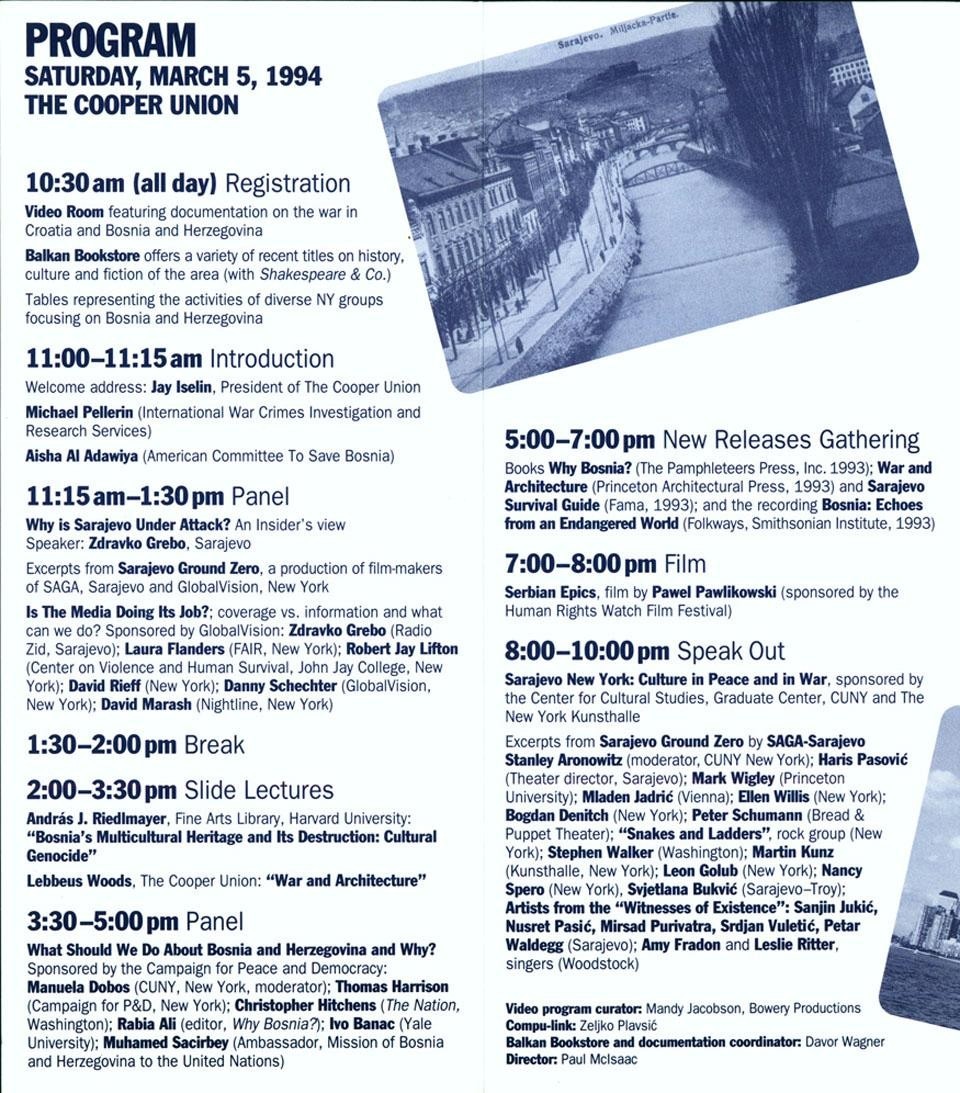
Above: SARAJEVO/NEW YORK conference program, March 5, 1994. Scanned from original program; the photo is from an old postcard.
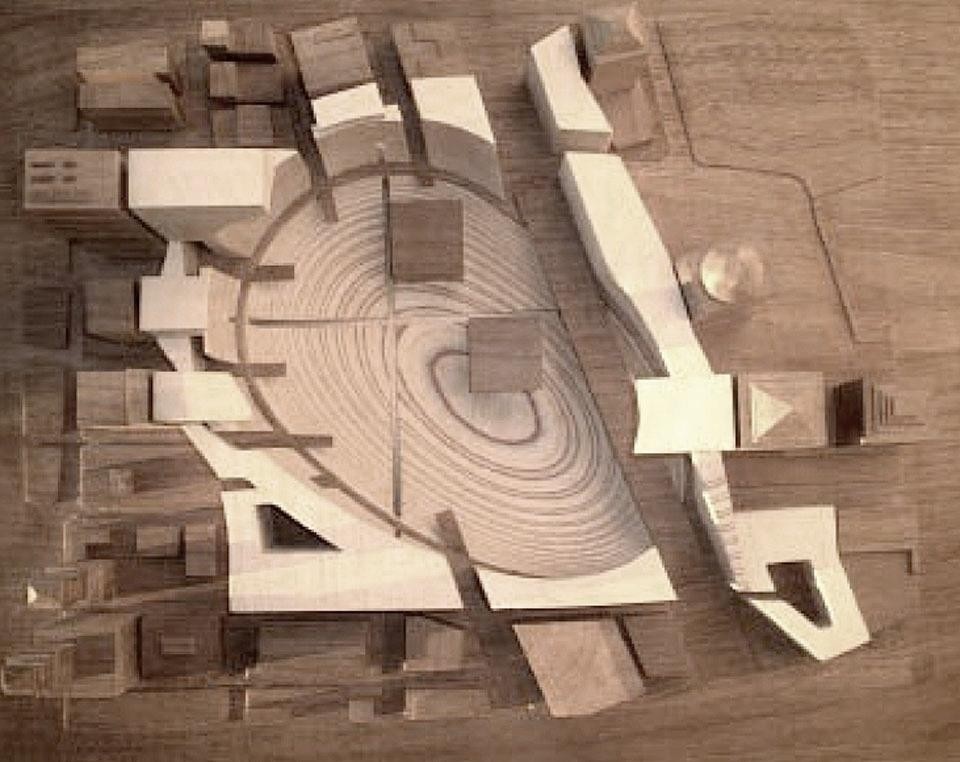
Fierce debates swirled around the World Trade Center site after its towers fell, focusing on how, or even if, the site should be rebuilt. Some of the most brilliant and creative architects of our time entered the debate, often with specific design proposals any number of which—if one had been used as a point of departure—could have turned tragedy into triumph, by radically reforming the devastated site into a new kind of public urban space.
The chance to create a great new work of architecture and public space—the best memorial to human courage and resilience in the face of terrible loss—had itself been lost.
-Holl-Manhattan_UPD1.jpg.foto.rmedium.jpg)
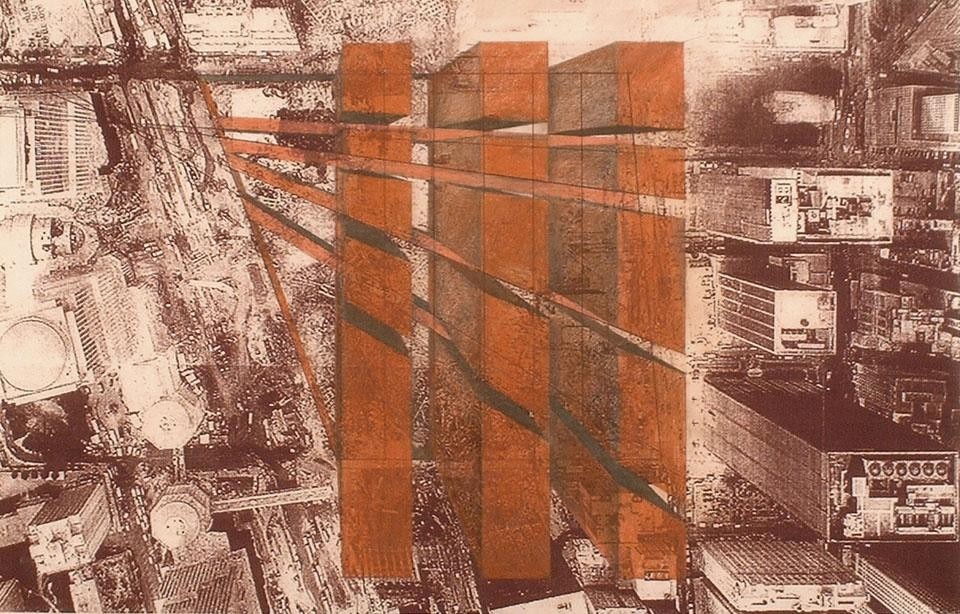
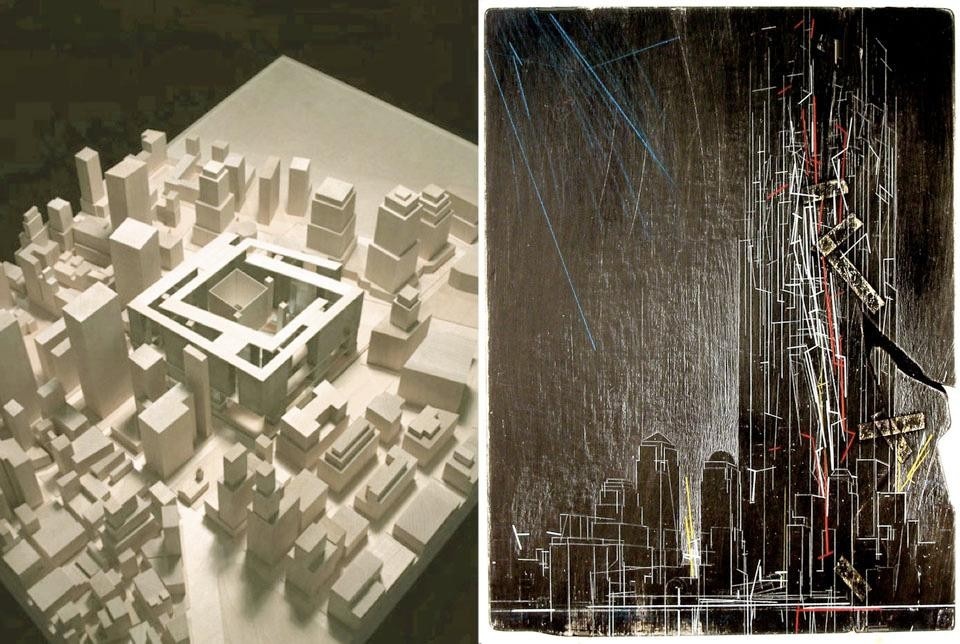
Right: Lebbeus Woods, Architect, proposed reconstruction of the World Trade Center site, 2002. Drawing by Lebbeus Woods.
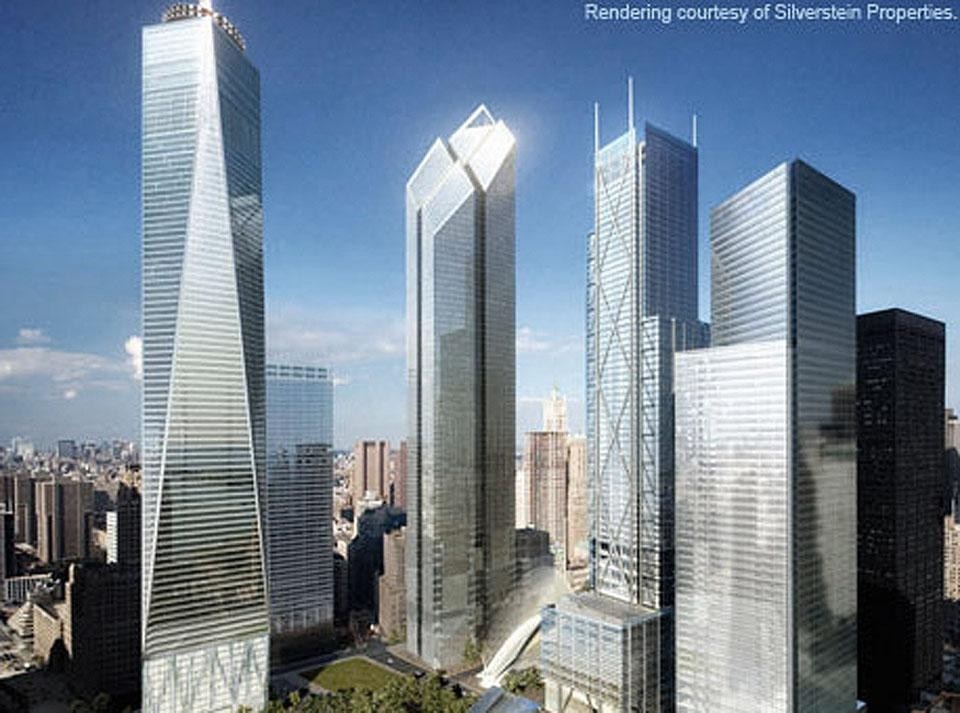
It is often said that New York is a center of global culture. The only culture that it is truly the center of is the culture of buying and selling, and of someone, usually a wealthy elite, making money in the process. In New York and, increasingly elsewhere, the culture of profit is the one all other subcultures revolve around. Of course, art and music and literature and dance all flourish in New York, because there is the possibility to 'buy and sell' them in one form or another—they make money. Without that money the cultures of beauty and inspiration would simply wither away, or so we are told. What we are not told by the corporations and individual patrons who assure us that capitalism is the great sponsor of the arts, is that it is only the arts that fit into the mainstream that are bought and sold. Indeed, the mainstream can tolerate and even requires a certain amount of naughty avant-garde art works that shock, criticize, provoke and attack corporate assumptions, in order to claim legitimacy in historical terms. But, there are precise limits to what can be done and promoted for profit, and they are tightly drawn. Any serious, non-ironic invocation of socialism will be ignored by the marketplace. Or any serious invocation of actual revolution, under the aegis of any ideology. Or any serious invocation of a future that does not include capitalism as its centerpiece. The list is long, but little discussed in public—that, too, is avoided by artists and critics who adopted long ago a self-censoring caution, lest they be considered terrorist sympathizers or otherwise unfit for the marketplace.
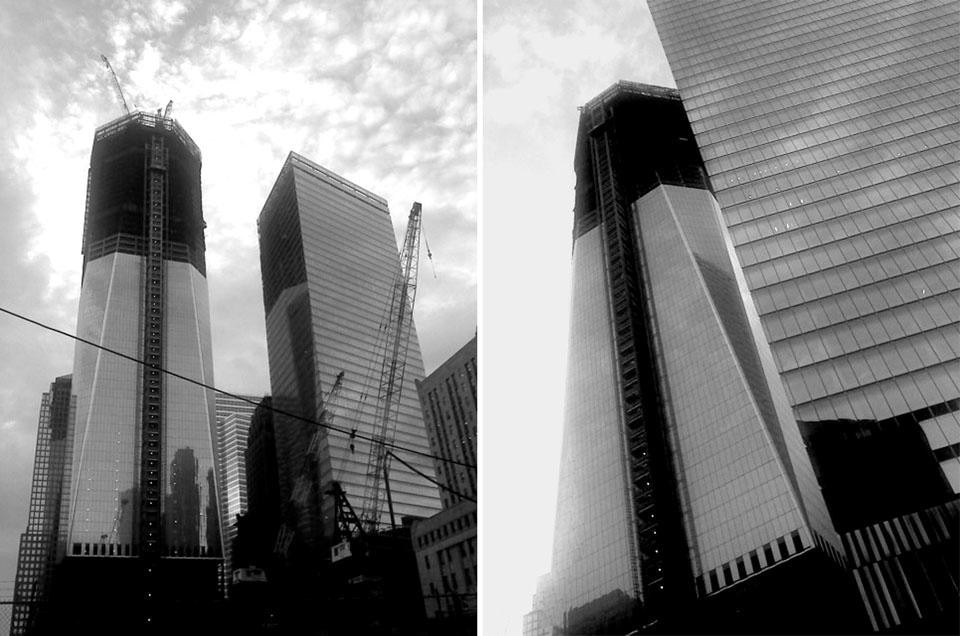
The message sent by New York, a focus of global attention on this September 11, is simple: Business as usual.


